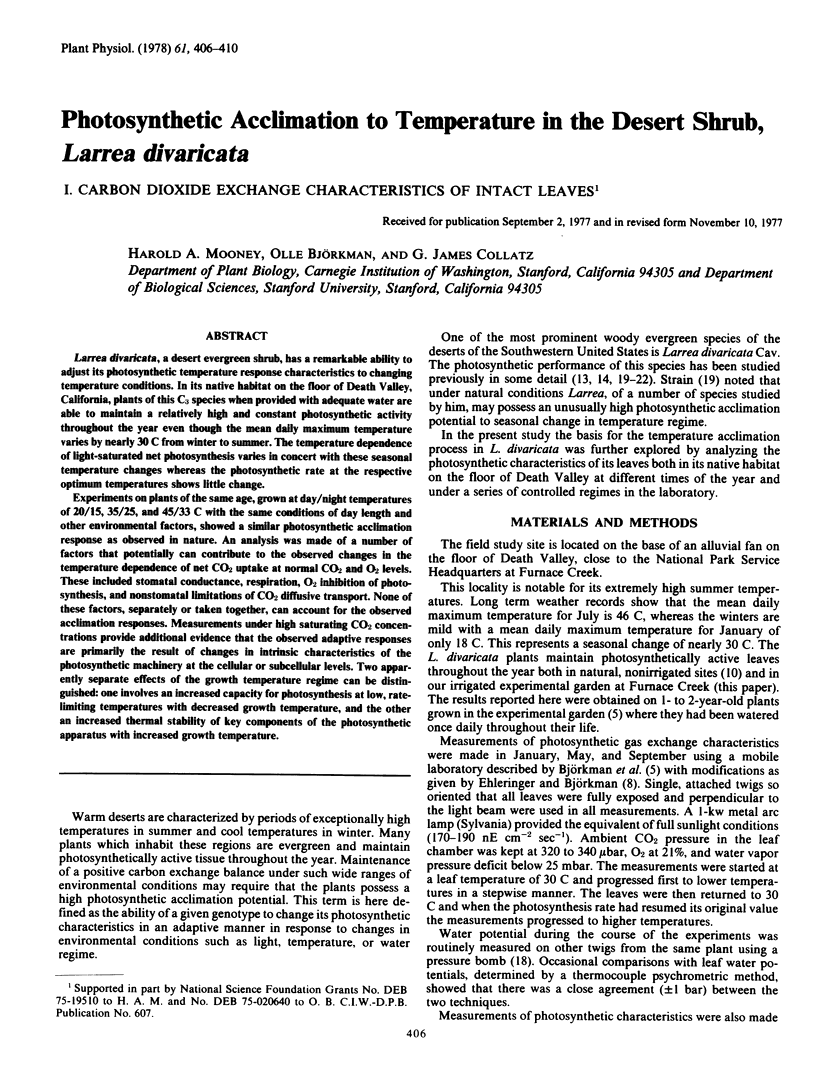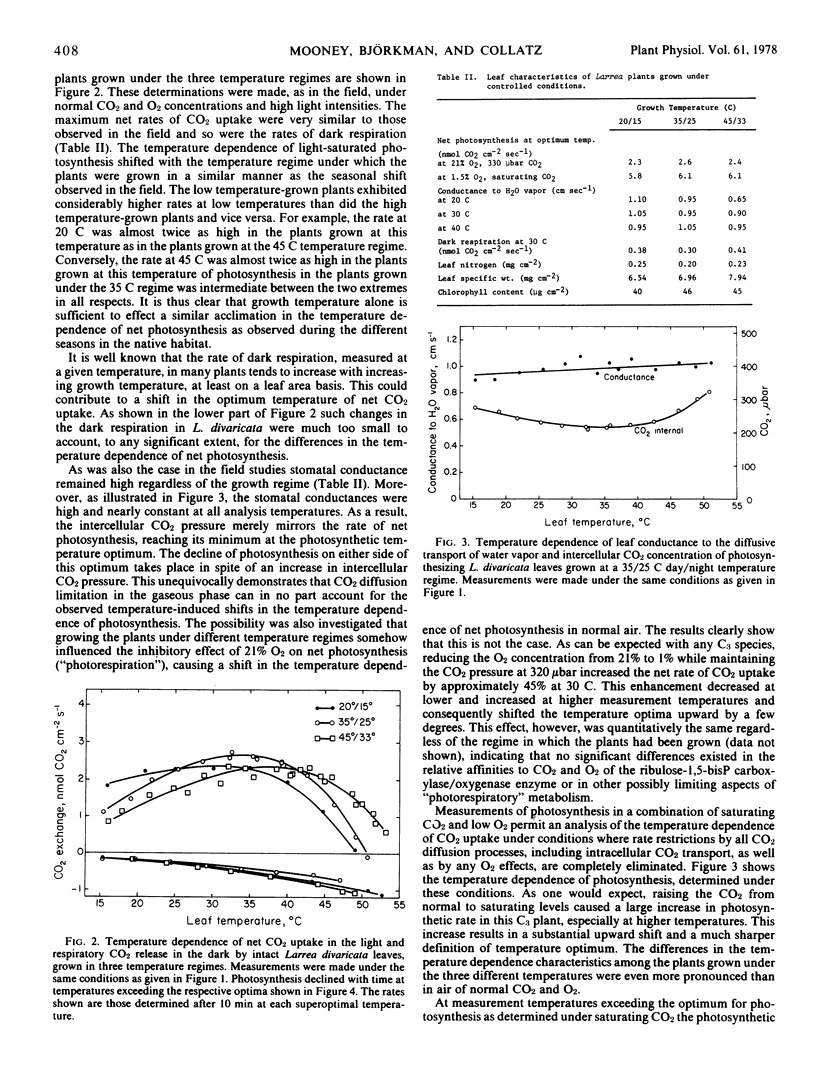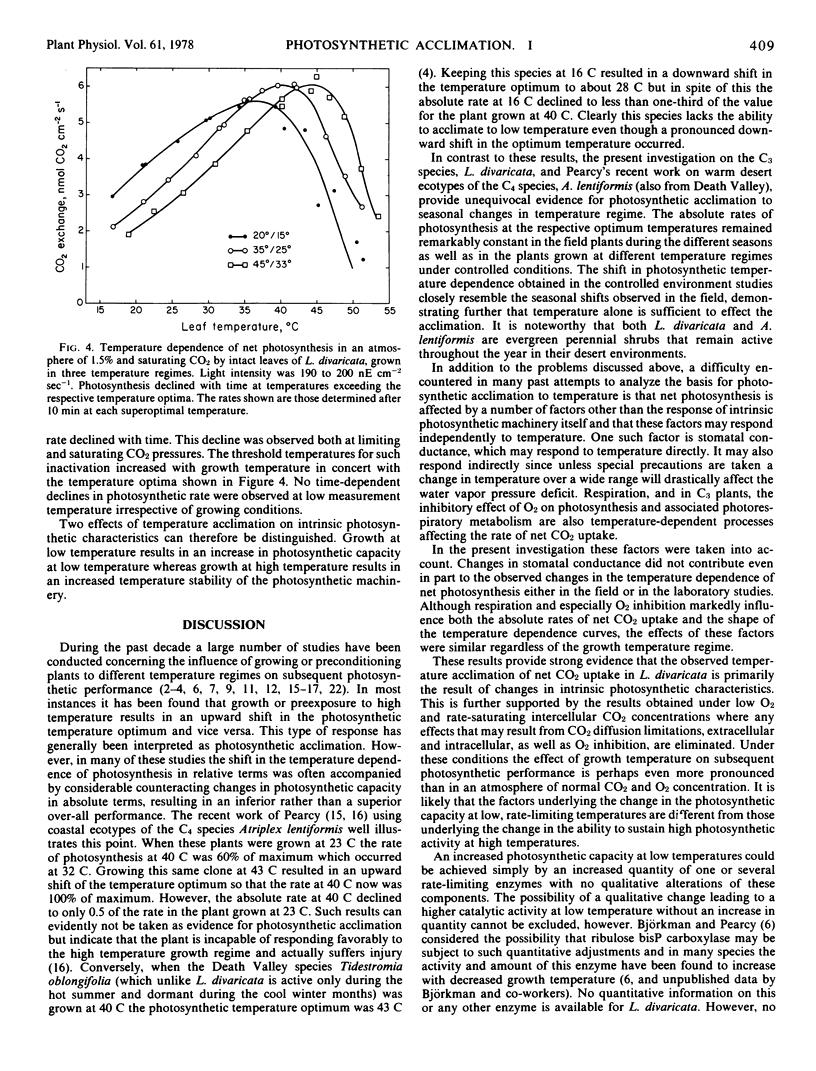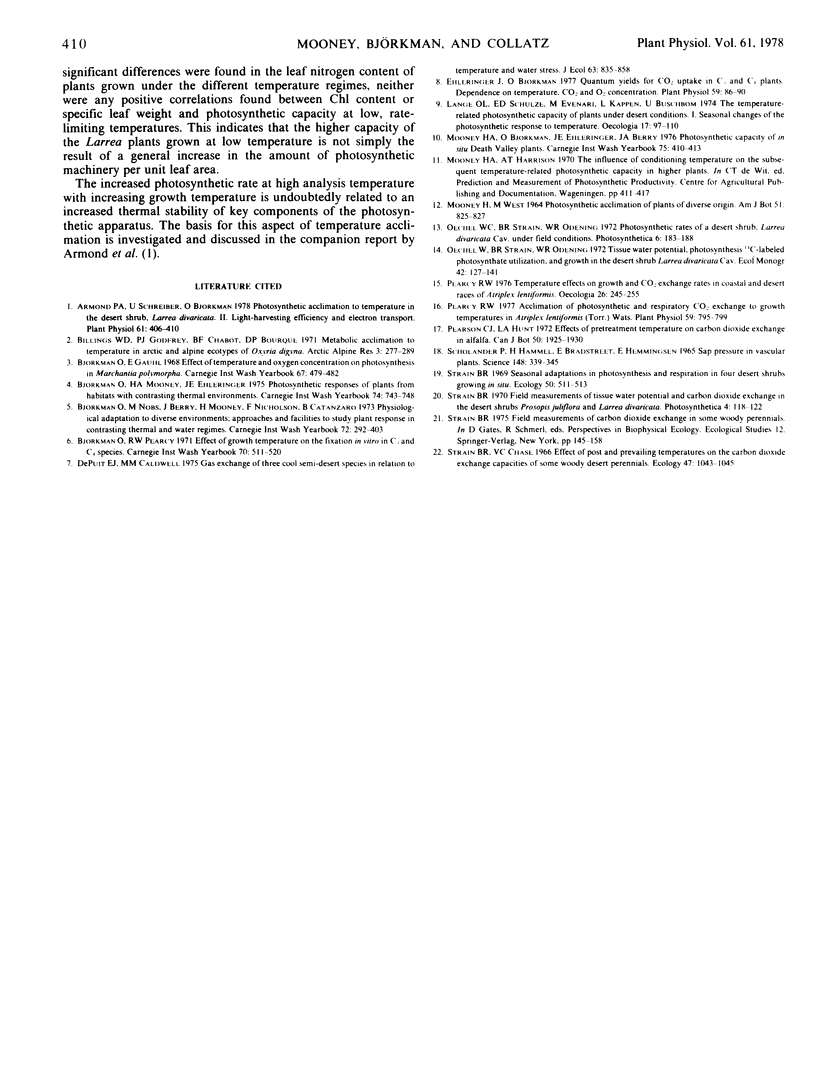Abstract
Larrea divaricata, a desert evergreen shrub, has a remarkable ability to adjust its photosynthetic temperature response characteristics to changing temperature conditions. In its native habitat on the floor of Death Valley, California, plants of this C3 species when provided with adequate water are able to maintain a relatively high and constant photosynthetic activity throughout the year even though the mean daily maximum temperature varies by nearly 30 C from winter to summer. The temperature dependence of light-saturated net photosynthesis varies in concert with these seasonal temperature changes whereas the photosynthetic rate at the respective optimum temperatures shows little change.
Experiments on plants of the same age, grown at day/night temperatures of 20/15, 35/25, and 45/33 C with the same conditions of day length and other environmental factors, showed a similar photosynthetic acclimation response as observed in nature. An analysis was made of a number of factors that potentially can contribute to the observed changes in the temperature dependence of net CO2 uptake at normal CO2 and O2 levels. These included stomatal conductance, respiration, O2 inhibition of photosynthesis, and nonstomatal limitations of CO2 diffusive transport. None of these factors, separately or taken together, can account for the observed acclimation responses. Measurements under high saturating CO2 concentrations provide additional evidence that the observed adaptive responses are primarily the result of changes in intrinsic characteristics of the photosynthetic machinery at the cellular or subcellular levels. Two apparently separate effects of the growth temperature regime can be distinguished: one involves an increased capacity for photosynthesis at low, rate-limiting temperatures with decreased growth temperature, and the other an increased thermal stability of key components of the photosynthetic apparatus with increased growth temperature.
Full text
PDF




Selected References
These references are in PubMed. This may not be the complete list of references from this article.
- Ehleringer J., Björkman O. Quantum Yields for CO(2) Uptake in C(3) and C(4) Plants: Dependence on Temperature, CO(2), and O(2) Concentration. Plant Physiol. 1977 Jan;59(1):86–90. doi: 10.1104/pp.59.1.86. [DOI] [PMC free article] [PubMed] [Google Scholar]
- Mooney H. A., Björkman O., Collatz G. J. Photosynthetic Acclimation to Temperature in the Desert Shrub, Larrea divaricata: I. Carbon Dioxide Exchange Characteristics of Intact Leaves. Plant Physiol. 1978 Mar;61(3):406–410. doi: 10.1104/pp.61.3.406. [DOI] [PMC free article] [PubMed] [Google Scholar]
- Pearcy R. W. Acclimation of Photosynthetic and Respiratory Carbon Dioxide Exchange to Growth Temperature in Atriplex lentiformis (Torr.) Wats. Plant Physiol. 1977 May;59(5):795–799. doi: 10.1104/pp.59.5.795. [DOI] [PMC free article] [PubMed] [Google Scholar]
- Scholander P. F., Bradstreet E. D., Hemmingsen E. A., Hammel H. T. Sap Pressure in Vascular Plants: Negative hydrostatic pressure can be measured in plants. Science. 1965 Apr 16;148(3668):339–346. doi: 10.1126/science.148.3668.339. [DOI] [PubMed] [Google Scholar]


